The Tomb of Khajeh Rabie in Mashhad
In the heart of Mashhad, surrounded by a lush, verdant garden, stands the awe-inspiring Tomb of Khajeh Rabie.
This historical site, dating back to the Safavid era, offers a captivating blend of architectural brilliance, spiritual significance, and historical intrigue. It is a place where the past whispers through the ornate tiles and the serene gardens invite contemplation. Tomb of Khajeh Rabie is not just a burial site but a masterpiece of Persian architecture and a symbol of Islamic culture.
Who Was Khajeh Rabie?
Khajeh Rabie, originally named Rabie bin Khathim Asadi Thori Kufi, was a distinguished figure in early Islamic history. Belonging to the Bani Asad clan and a resident of Kufa, he was renowned as one of the eight ascetics known as Sadr of Islam. Khajeh Rabie’s significance is multifaceted, reflecting his roles as a devout companion of both Prophet Muhammad and Imam Ali, as well as a commander and promoter of Islamic teachings.
Khajeh Rabie played an integral part in the early Islamic community, serving as a commander in Hazrat Ali's army. He notably assisted Hazrat Ali during the battle of Safin, showcasing his dedication and strategic prowess. Additionally, he was appointed as the commander of Rey in the early days of Hazrat Ali's caliphate, highlighting his trusted status within the Islamic leadership.
In the second half of the first century AH, Khajeh Rabie migrated from Arabia to Khorasan, where he eventually settled in Noghan. He continued to contribute to the Islamic community until his death, which occurred between 61-63 AH. His final resting place in Mashhad became a revered site, visited by Imam Reza himself during his journey to the city.
Khajeh Rabie’s legacy is deeply embedded in the Islamic tradition, reflecting his unwavering faith and service. His life and contributions have left an indelible mark on Islamic history, making his tomb a site of pilgrimage and reverence for generations to come.
A Glimpse into History of the Tomb of Khajeh Rabie

The construction of the Tomb of Khajeh Rabie was commissioned by Shah Abbas I and guided by the renowned scholar Sheikh Bahai. The project, completed in the early 17th century, reflects the architectural splendor of the Safavid period. Khajeh Rabie, or Rabie bin Khathim Asadi Thori, was a revered companion of Prophet Muhammad and Imam Ali. His legacy as a promoter of Islam and a respected Muslim scholar is enshrined in this beautiful tomb, located in Hossein Abad Khajeh Rabie village.
The Tomb of Khajeh Rabie Architecture
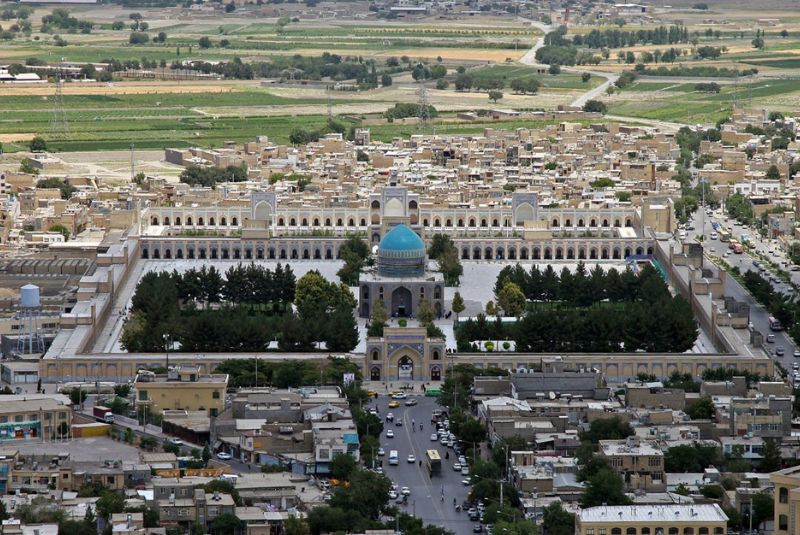
The Tomb of Khajeh Rabie is a stunning example of Safavid architecture, celebrated for its impressive design and rich history. At the center of its beauty is a striking turquoise dome that rises 18 meters high. This dome is decorated with intricate tiles and golden ornaments, showcasing the skilled craftsmanship of the era.
The tomb is octagonal in shape, designed to blend harmoniously with its beautiful garden surroundings. Inside, visitors are greeted by intricate artworks and writings by Safavid calligraphers like Alireza Abbasi. These writings, in elegant Thuluth script, include verses from the Quran and teachings from Nahj al-Balaghah, adding a spiritual touch to the serene atmosphere.
The tomb’s design is said to have inspired the creation of the Taj Mahal, one of the seven wonders of the world. This connection adds an extra layer of fascination for those who marvel at the global impact of Persian architecture.
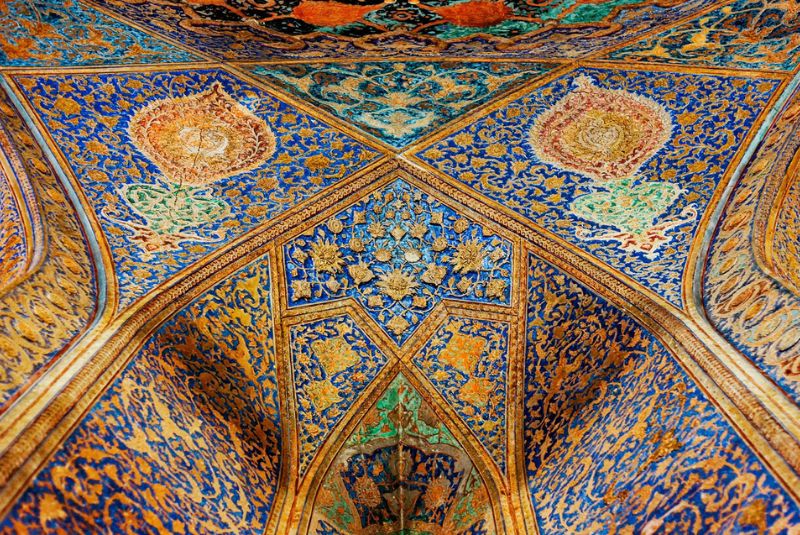
In front of the garden entrance, there is an ab anbar (traditional water reservoir), attributed to Umm Kulthum and built during the reign of Shah Suleiman Safavi with the efforts of Mirza Sadr al-Din. This historical structure adds to the charm and historical depth of the site.
Surrounded by meticulously landscaped gardens, the Tomb of Khajeh Rabie offers a peaceful sanctuary for contemplation. The garden's design complements the tomb's symmetry and elegance, creating a tranquil environment that invites visitors to reflect on its historical and artistic splendor. With its turquoise tiles shimmering in the sunlight, the Tomb of Khajeh Rabie continues to captivate visitors, preserving its legacy as a masterpiece of Safavid architectural brilliance.
Cultural and Religious Importance of Khajeh Rabie’s Tomb
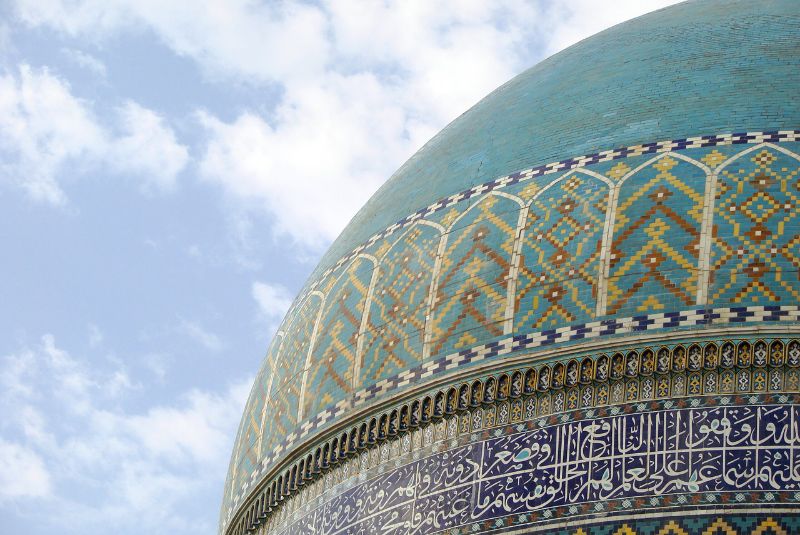
The Tomb of Khajeh Rabie is not just an architectural marvel but also a site of deep cultural and religious significance. Khajeh Rabie was a key figure in the promotion and spread of Islam. His contributions to Islamic teachings and his close association with revered Islamic leaders make his tomb a place of pilgrimage and reverence.
The Garden: A Historical Witness
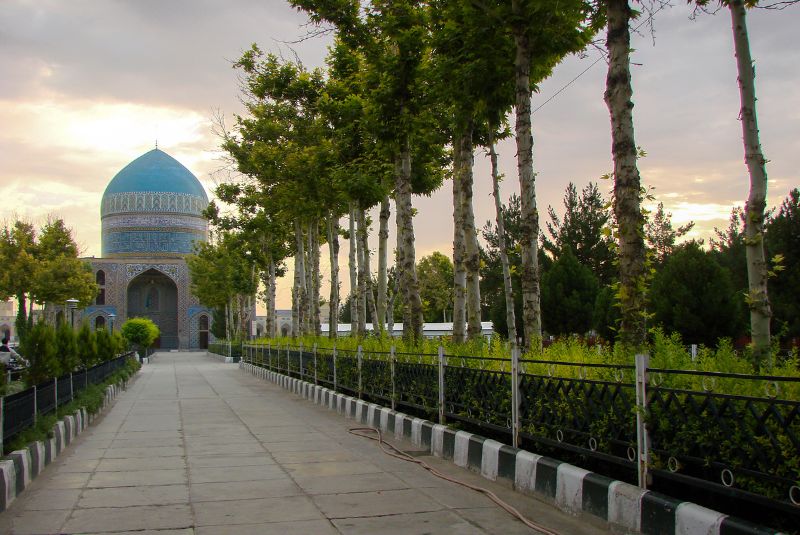
The garden surrounding the Tomb of Khajeh Rabie is more than just a picturesque landscape; it is a historical witness to various events. One such event occurred in 1760 when Nader Qoli Afshar executed Fath Ali Khan, an ancestor of the Qajars, within this garden. The garden, with its serene pathways and ancient trees, has seen centuries of history unfold, making it a living chronicle of Iran’s past.
Tips for Visitors
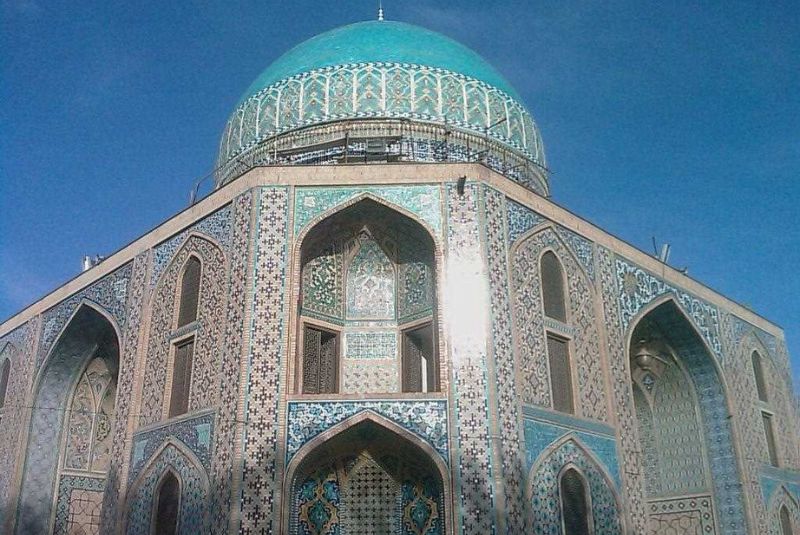
To fully appreciate the beauty and significance of the Tomb of Khajeh Rabie, consider visiting during the early morning or late afternoon when the light enhances the intricate tile work. Take a guided tour to learn more about the history and architectural details of the tomb. Don't forget to spend some time in the surrounding gardens, which offer a serene escape from the hustle and bustle of the city.
Khajeh Rabie’s Tomb Nearby Attractions
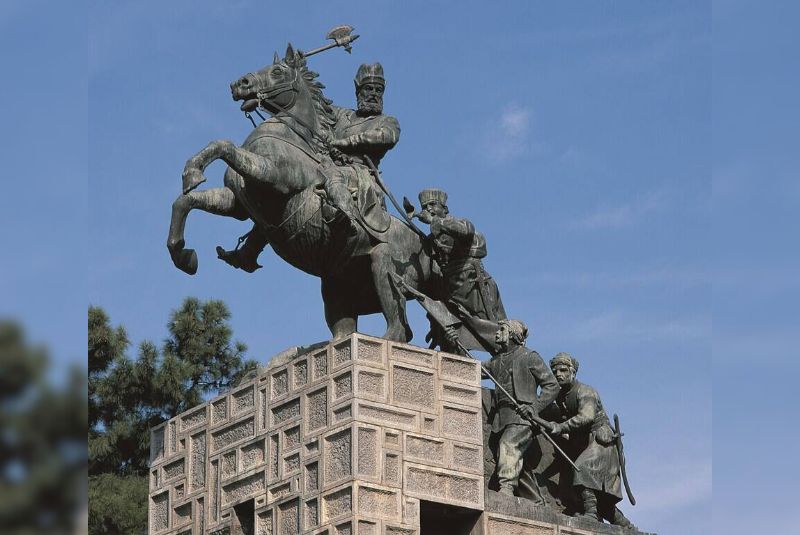
Visitors to the Tomb of Khajeh Rabie can also explore several nearby attractions, enhancing their experience in Mashhad:
- Mashhad Bird Garden: A delightful place for families and bird enthusiasts, offering a chance to see a variety of bird species in a beautifully designed habitat.
- The Shrine of Imam Reza: One of the most significant pilgrimage sites in the Islamic world, known for its stunning architecture and spiritual atmosphere.
- Naderi Museum Garden: A museum dedicated to Nader Shah, featuring historical artifacts and beautiful gardens.
- Reza Bazaar: A bustling marketplace where visitors can shop for traditional Iranian goods, handicrafts, and souvenirs.
Finally!
The Tomb of Khajeh Rabie in Mashhad stands as a testament to Iran’s rich cultural and historical heritage. Its stunning architecture, deep historical roots, and cultural significance make it a must-visit destination for anyone traveling to Mashhad. Whether you are seeking spiritual solace, historical knowledge, or simply a beautiful place to explore, the Tomb of Khajeh Rabie offers something for everyone. Discover the beauty and tranquility of this sacred site, where centuries of Persian artistry and spirituality converge, inviting you to immerse yourself in its timeless allure. Plan your visit today and experience the captivating blend of history and architectural splendor that awaits at the Tomb of Khajeh Rabie.
Share your story!
Comment below and let us know about your Experience.
Your story inspires others!


Comment
Leave a Comment